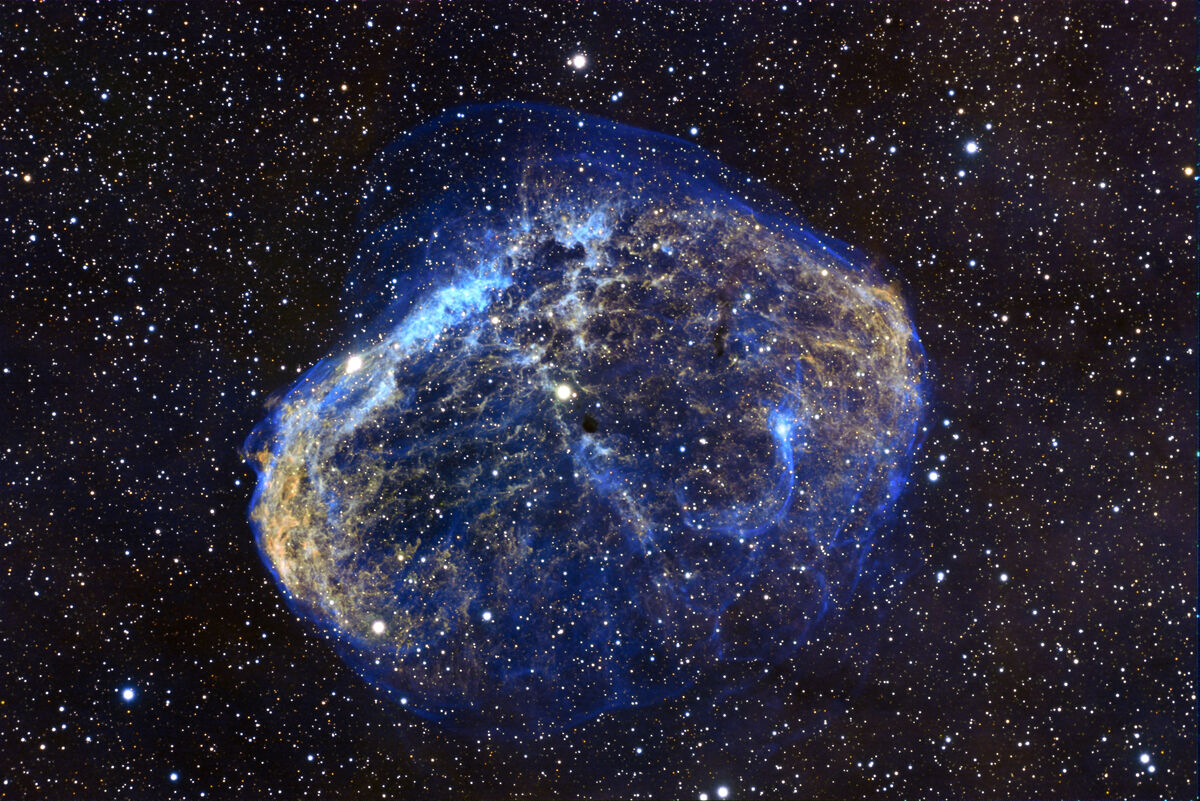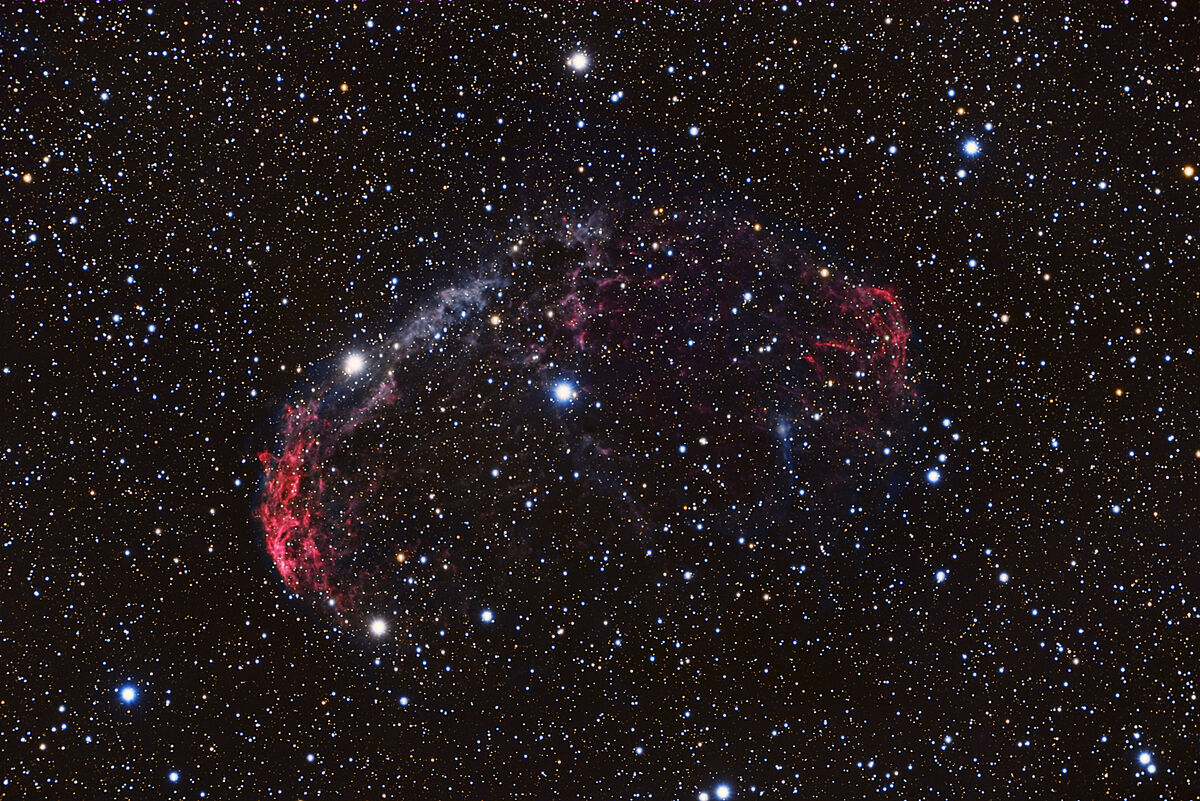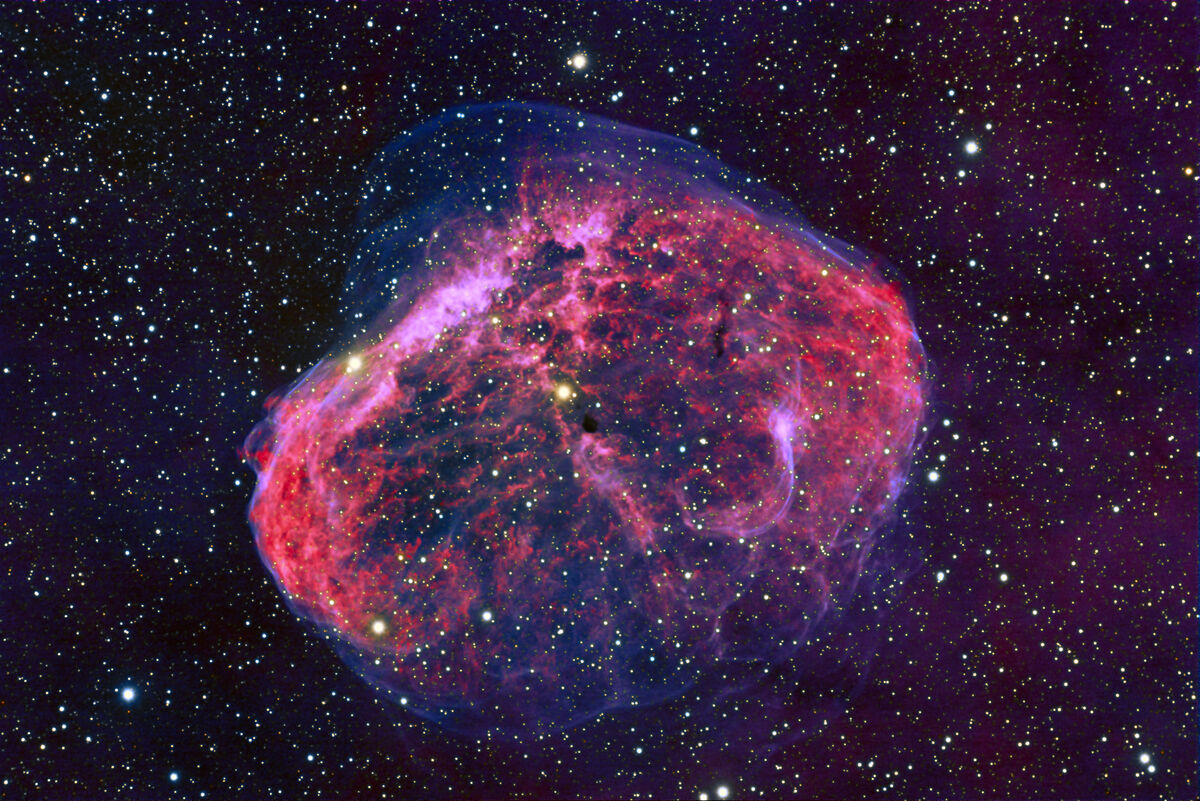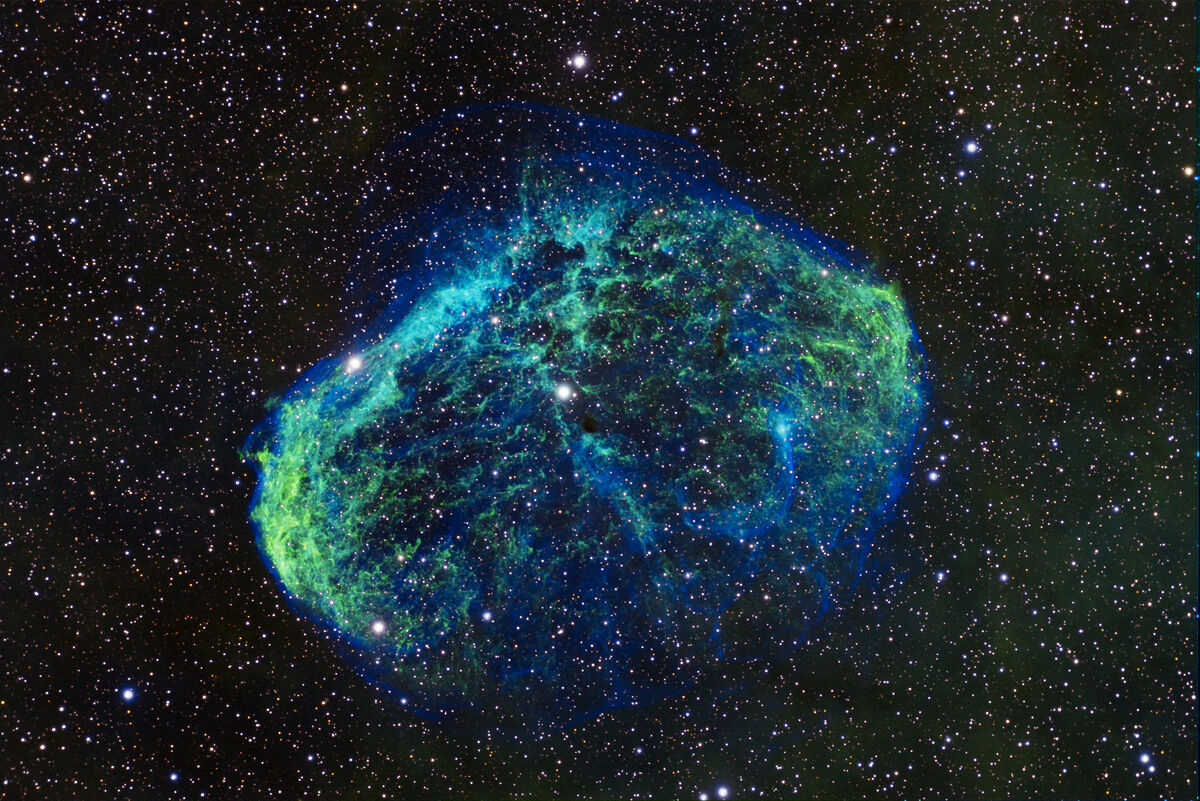Brain floating in Space
Aug 26, 2022 15:01:01 #
Ballard
Loc: Grass Valley, California
The images below are of the Cresent nebula (NGC 6888) in the Constellation of Cygnus the Swan. This emission nebula is around 5000 light years and is powered a bright Wolf-Rayet star that is ~in the middle of the nebula. Fast stellar winds from this star are colliding with slower gas emitted by the star when it became are Red giant around 1/4 of million years ago and causing it glow. The images below were made using different combinations of filter to bring out the different elements of the nebula. In general, the blue comes from Oxygen energized by the collision. Red comes from Hydrogen gas (except for the Hubble pallet image were the Hydrogen Alpha (Ha) line has been assigned to the green channel).
The first image was made using the third and fourth images and shows why it has the nick name "Brain Nebula".
The second image was made using Luminance, Red, Green and Blue filters and shows why this is called the Crescent nebula.
The Third image was made using a Narrow band Oxygen 3 (O3) filter for the luminance and the Blue channel, a Green filter for the Green Channel and a Narrow Band Ha filter for the red channel.
The fourth image was made using what is known as the Hubble Pallet were a Narrow band Sulphur 2 filter is used for the Red Channel (Note: the yellow in the image where the red and green combine), Ha is used for the Green Channel and O3 is used for the Blue channel.
All the images were taken at F10 with a 4096 mm focal length using an ASI 6200MM pro camera using 1x1 binning, gain set to 100 and cooled to -12C.
Exposure times used per filter
Red -15 exposures at 4 minutes each.
Green -15 exposures at 4 minutes each.
Blue -16 exposures at 4 minutes each.
Luminance -20 exposures at 2 minutes each.
Ha -15 exposures at 500 seconds each.
O3 -15 exposures at 500 seconds each.
S2 -15 exposures at 500 seconds each.
The first image was made using the third and fourth images and shows why it has the nick name "Brain Nebula".
The second image was made using Luminance, Red, Green and Blue filters and shows why this is called the Crescent nebula.
The Third image was made using a Narrow band Oxygen 3 (O3) filter for the luminance and the Blue channel, a Green filter for the Green Channel and a Narrow Band Ha filter for the red channel.
The fourth image was made using what is known as the Hubble Pallet were a Narrow band Sulphur 2 filter is used for the Red Channel (Note: the yellow in the image where the red and green combine), Ha is used for the Green Channel and O3 is used for the Blue channel.
All the images were taken at F10 with a 4096 mm focal length using an ASI 6200MM pro camera using 1x1 binning, gain set to 100 and cooled to -12C.
Exposure times used per filter
Red -15 exposures at 4 minutes each.
Green -15 exposures at 4 minutes each.
Blue -16 exposures at 4 minutes each.
Luminance -20 exposures at 2 minutes each.
Ha -15 exposures at 500 seconds each.
O3 -15 exposures at 500 seconds each.
S2 -15 exposures at 500 seconds each.
Made from a combination of the third and fourth images below

(Download)
LRGB image (What your eye would see if it was sensitive enough).

(Download)
O3 for the luminance and blue channel, Ha for the Red Channel and Green for the Green Channel

(Download)
Hubble Pallet image

(Download)
Aug 26, 2022 15:11:35 #
Aug 26, 2022 15:21:31 #
Aug 26, 2022 15:39:44 #
Aug 26, 2022 15:43:16 #
Ballard
Loc: Grass Valley, California
Architect1776 wrote:







Hi Architect1776
Thanks for checking out the images of the Brain Nebula and for all the Thumbs up.
Aug 26, 2022 15:44:09 #
Ballard
Loc: Grass Valley, California
Longshadow wrote:
Neat!
Hi Longshadow
Thanks for viewing the images of the Crescent Nebula and for the comment.
Aug 26, 2022 15:44:51 #
Ballard
Loc: Grass Valley, California
angler wrote:
Amazing set.
Hi angler
Thanks for viewing the Crescent Nebula images and for the comment.
Aug 26, 2022 16:28:09 #
Ballard wrote:
The images below are of the Cresent nebula (NGC 68... (show quote)
Very nice and a great description.
bwa
Aug 26, 2022 16:40:38 #
Ballard
Loc: Grass Valley, California
bwana wrote:
Very nice and a great description.
bwa
bwa
Hi bwa
Thanks for checking out the Images of the Crescent Nebula and for the comment.
Aug 26, 2022 22:27:16 #
Aug 26, 2022 22:32:49 #
Wow! The amount of work and skill to produce these images is huge, but the results are breathtaking.
Aug 27, 2022 01:29:02 #
Ballard
Loc: Grass Valley, California
Retired CPO wrote:
Outstanding work once again Ballard!
Hi Retired CPO
Thanks for checking out the images of the Crescent Nebula and for the comment.
Aug 27, 2022 01:29:51 #
Ballard
Loc: Grass Valley, California
TriX wrote:
Wow! The amount of work and skill to produce these images is huge, but the results are breathtaking.
Hi TriX
Thanks for viewing the images of the Crescent Nebula and for the comment, I'm glad you liked them.
Aug 27, 2022 05:19:30 #
Aug 27, 2022 05:29:16 #
If you want to reply, then register here. Registration is free and your account is created instantly, so you can post right away.






